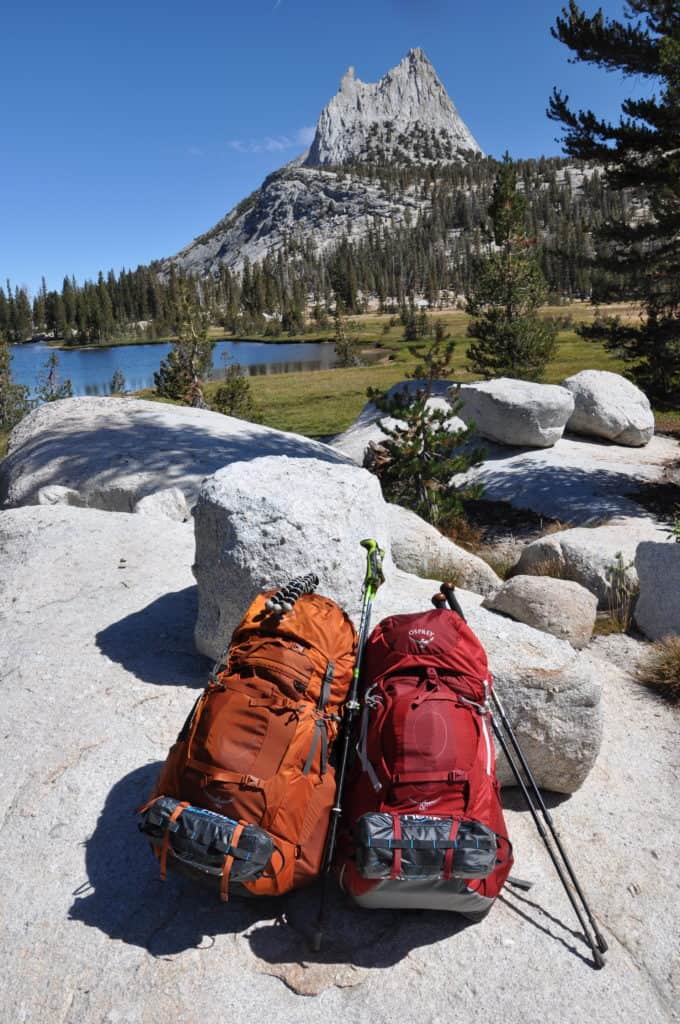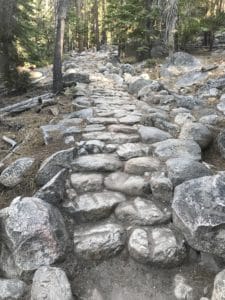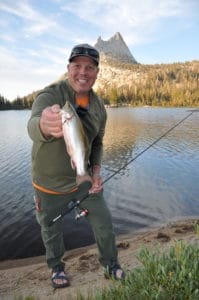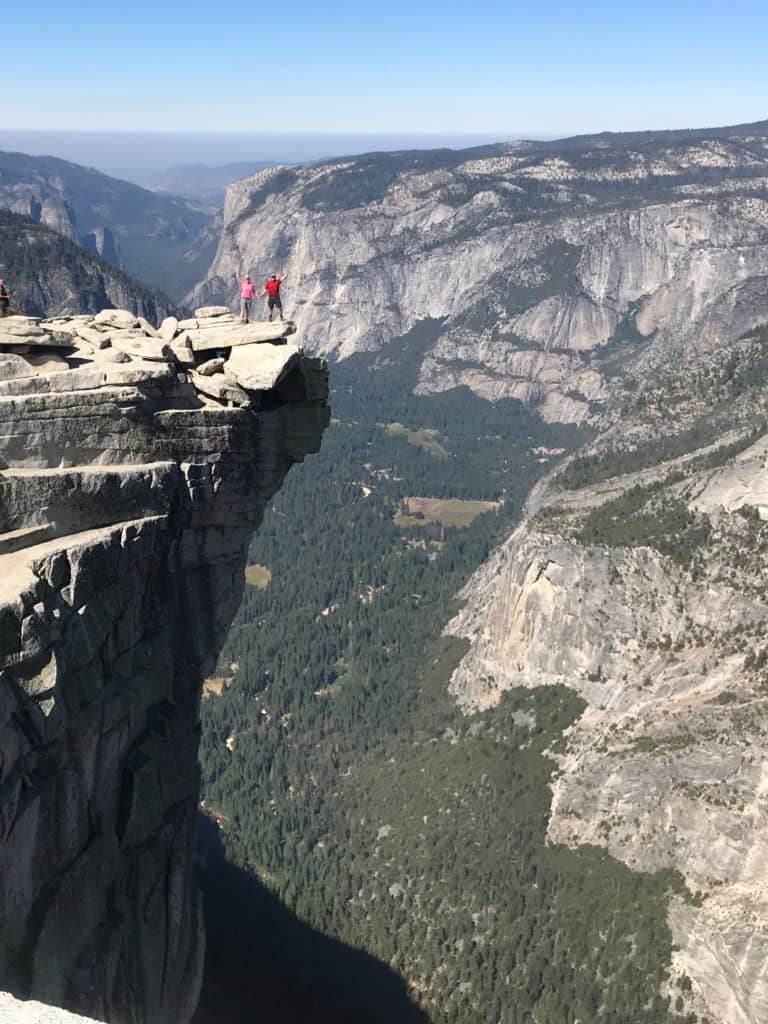
Hiking Gear at Yosemite with El Capitan in the background
As the bus pulled to the side of the road, my wife Kris and I were the only ones to climb off at the dirt trailhead. It was a beautiful July afternoon in the Sierra Nevada Mountains in famed Yosemite National Park as we said goodbye to civilization. We’d been planning this trip for a year, and now we were living out the dream. We shouldered our packs and began the 45-mile hike back to Yosemite Valley, where we climbed on the shuttle bus earlier in the day.
Kris and I and love visiting national parks but dislike the elbow-to-elbow crowds and bumper-to-bumper traffic in the top-rated destinations. Most visitors to national parks never venture more than a few minutes from their cars. So, we’ve learned that shouldering a backpack and hiking in a few miles will free you of the crowds and open grand views and features that most will only see in travel books.
On this trip to Yosemite National Park, we applied for backcountry permits to backpack from Tuolumne Meadows through the heart of the park, ending in Yosemite Valley. While applying for our backcountry permits, we also applied for and luckily drew permits to climb the famed Half Dome rock formation.
Here are some tips that we learned while backpacking our National Parks!
Tips for Backpacking our National Parks
-
Plan your trip early
Many of the parks start taking backcountry permit applications 6-8 months in advance. Permit systems vary from park to park, so research the permit system well in advance. Many people gain an advantage just by knowing the systems’ idiosyncrasies and playing them to their advantage. Determine your dates and the trailhead you plan to enter and exit. Once in the backcountry, the permit doesn’t limit you to the trails you choose. For more information and advice, call the park’s backcountry office and visit with a park ranger—they are always eager to share information.
-
Get your gear dialed in
Hitting the trail for a week-long backpacking trip in the mountains is not the time to try your gear for the first time. Weekend trips close to home will help you determine exactly what you need and don’t need to help you limit yourself to the essential equipment for your big trip. Researching and buying gear is fun; and there is a plethora of information on everything from tents to cooks stoves online. Every time I look at a new piece of gear, I try to find a YouTube review or tour video.
-
Keep it light.
Backpacking gear can vary drastically in price. Typically, the less it weighs, the more it costs. There are many popular brands, and picking just the right one for you can be difficult. A trip to a retailer can be beneficial when choosing and getting properly fitted for a backpack. Decide where you can fork out the additional dough for the better gear and where you can get stick with something more average. We recently upgraded our packs to some expensive, extremely lightweight Osprey backpacks, but we stuck with my trusty 15-year-old Jetboil camp stove. I saved weight in one area and not the other. Enjoying backpacking is a game of ounces; the lighter the pack, the more you’ll enjoy the experience.
-
Plan an enjoyable route

When planning your route, keep the miles you hike in a day short. Ten-mile days up and down rocky mountain trails are possible, but they’ll eat up a lot of the day. We prefer to get up early and hike to our next destination before the afternoon heat sets in. Depending on the terrain and sights along the way, we usually only cover five to seven miles in a day. After all, you are on vacation, and backpacking is a lot of work. We enjoy getting our camp set up in the early afternoon and getting a nap in before an evening sightseeing hike or some fishing.
-
Pack a rod.

My pack never leaves home without my trusty collapsible Zebco rod. I enjoy catching trout in mountain streams and cooking them over dehydrated hashbrowns. Fresh fish is a nice break from dehydrated meals. On the trip through Yosemite’s backcountry, I thoroughly enjoyed having a few mountain streams and a lake to myself and managed to catch quite a few trout. I keep my setup simple. I pack a lightweight, collapsible
fishing rod spooled with 6-pound mono and a handful of Mepps and Panther Martin spinning lure in different colors. I tend to do better on black spinners in clear water; the bright flash of brass or silver sometimes spooks fish on sunny days. During low-light, I switch to bright colors.
-
Have an emergency plan.
Bad weather, aching joints, a bear stealing your food, and other unplanned events can challenge your carefully laid plans. Build an extra day or two into your schedule to deal with unexpected problems. Have a well-thought-out first-aid kit and know how to use what’s in it. Have a communication device like the SpotX or Garmin In-Reach preprogrammed with the park service number. Pack bear spray and a system to bear-proof your food. Having a solid emergency plan will increase your enjoyment and safety.
Our time backpacking through Yosemite was amazing. Catching trout in Cathedral Lake, sleeping under the stars, and summiting Half Dome were some of our favorite moments. We spent a little time in Yosemite Valley rubbing elbows with the crowds, but the most rewarding part of the trip was our time in the backcountry where we managed to feel alone in a park that gets more than 4 million visitors a year. A trip like ours is within anyone’s reach. Do your homework and plan to the smallest detail. Today is a great time to start planning your adventure into the lesser-seen wonders of America’s National Parks.




